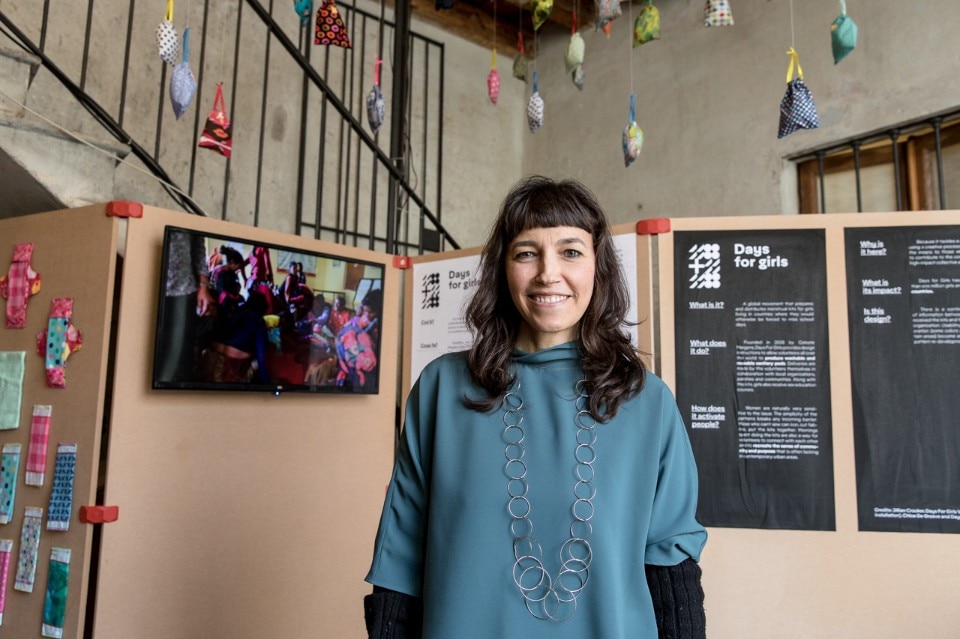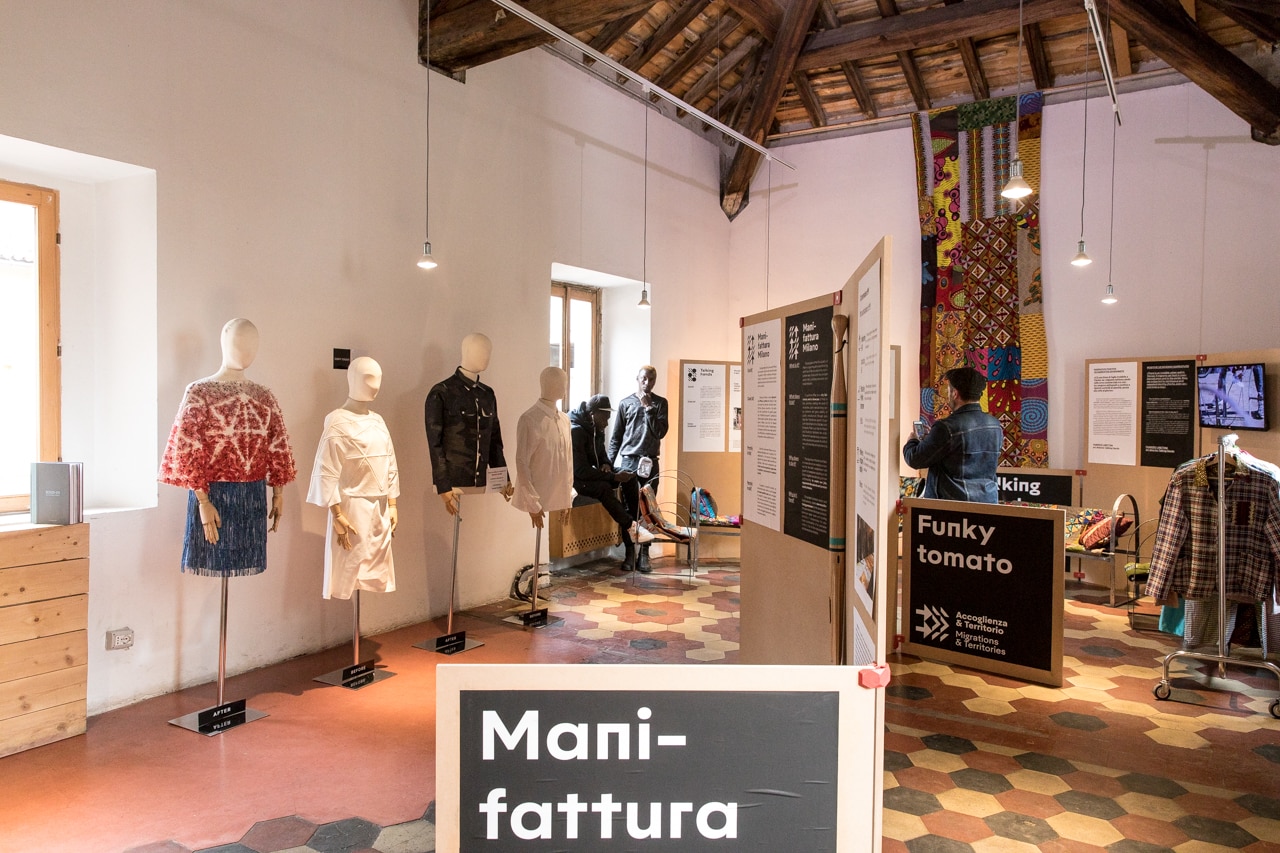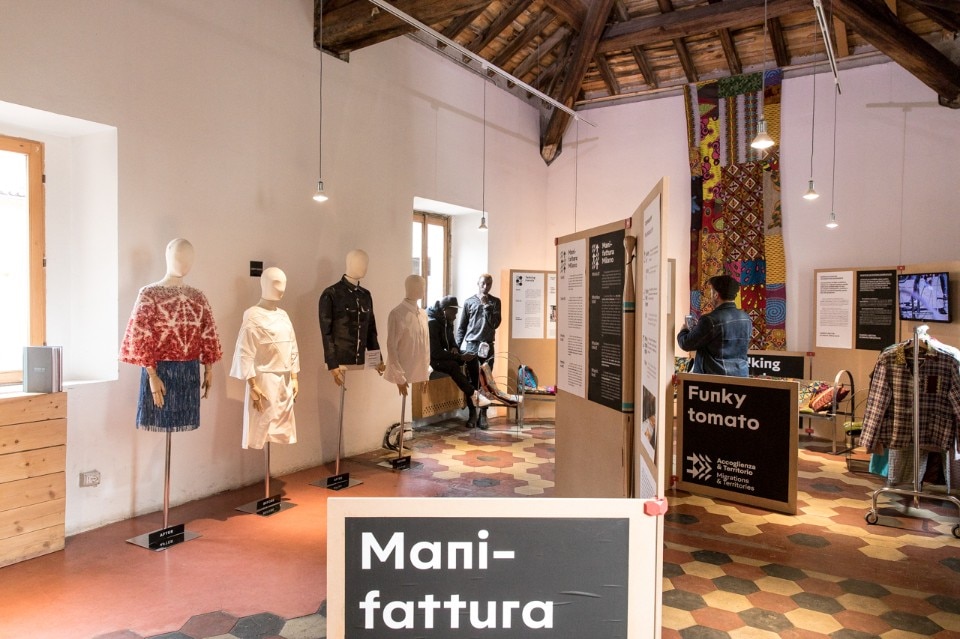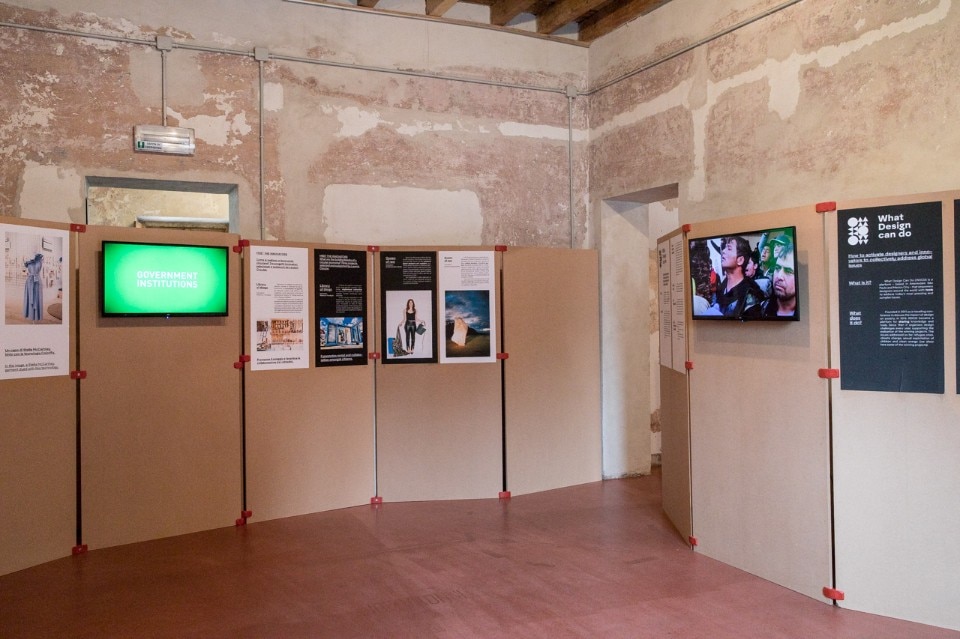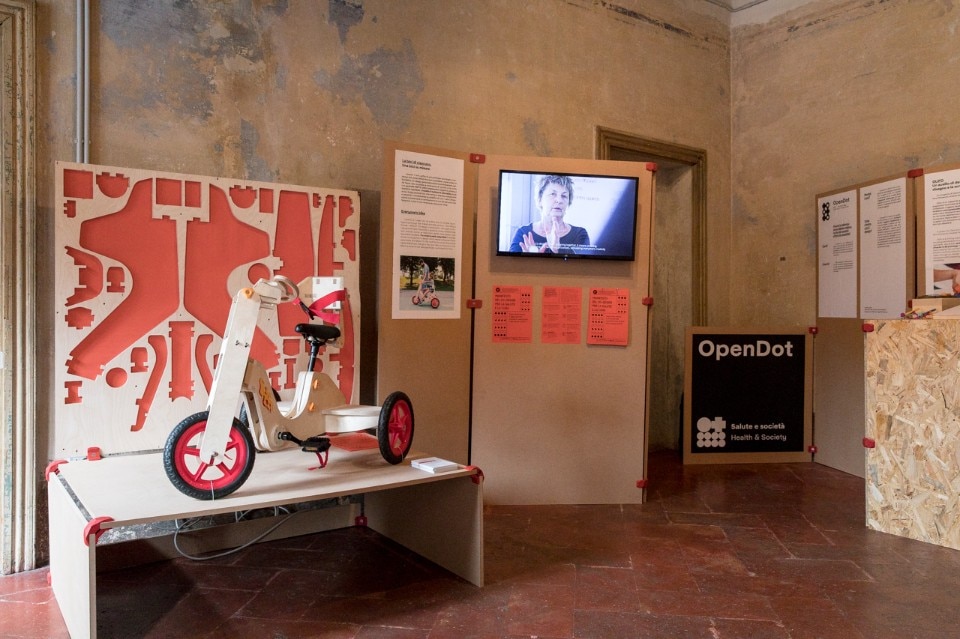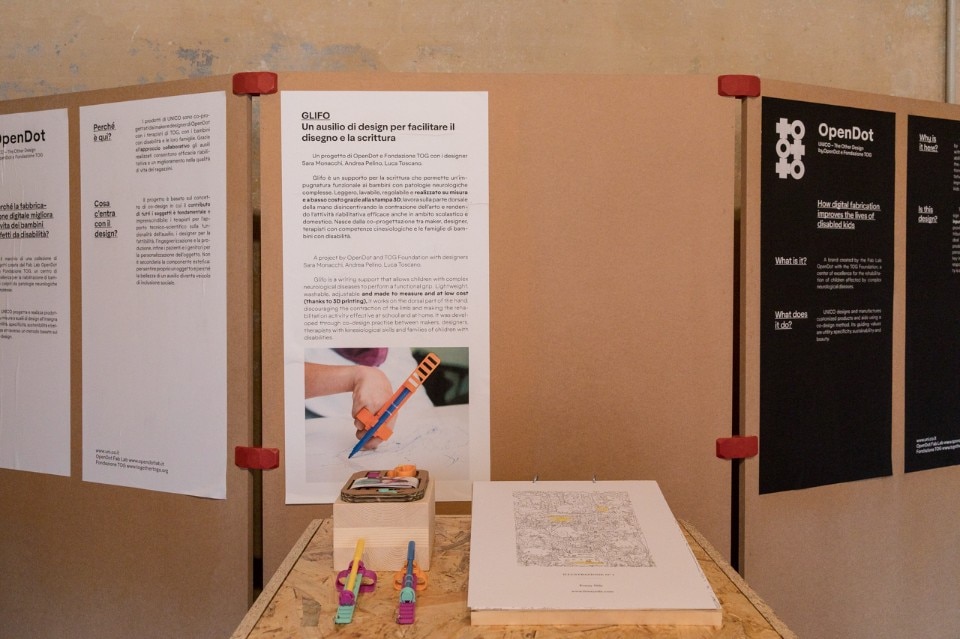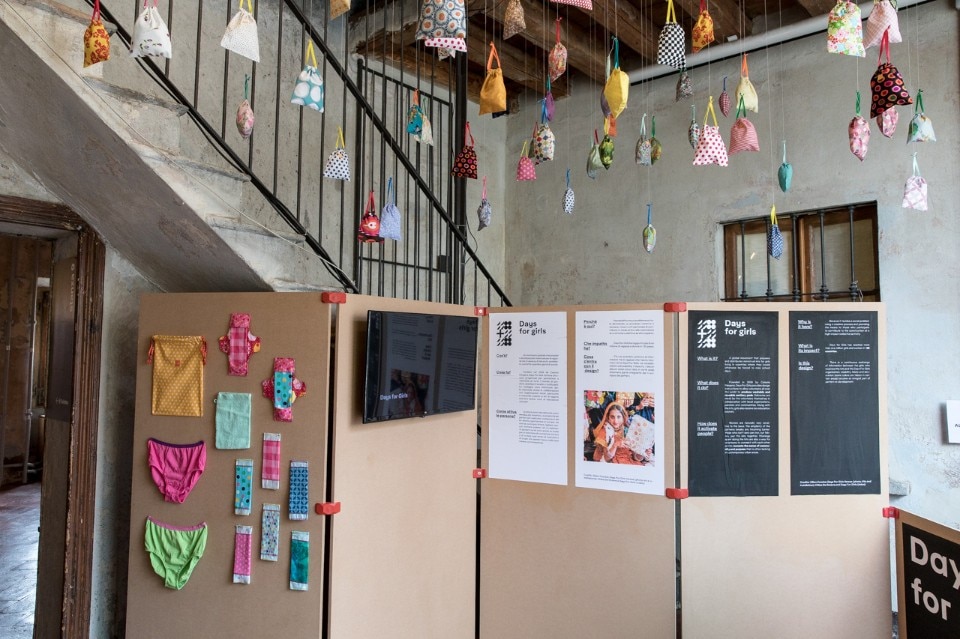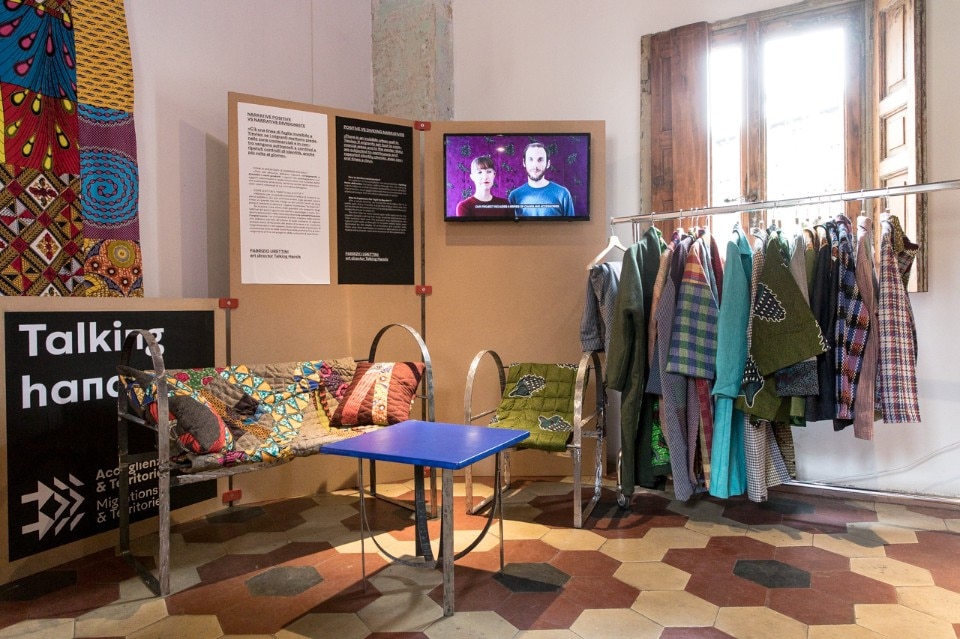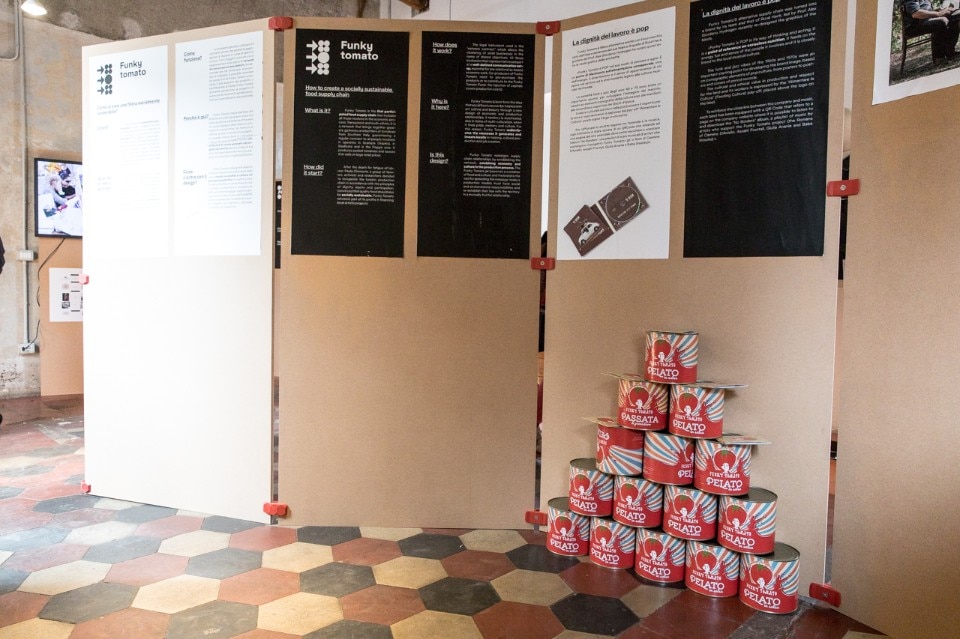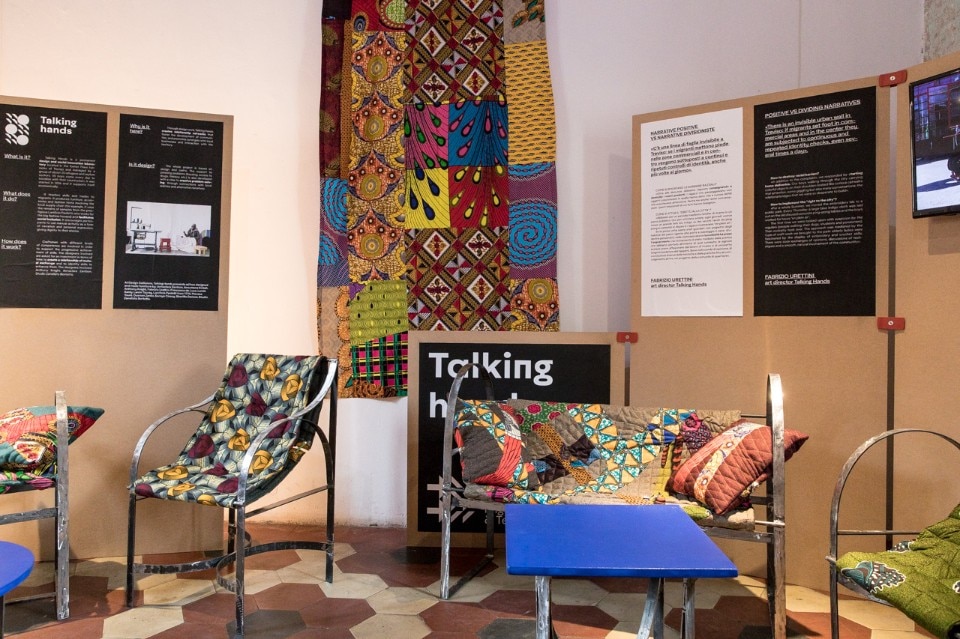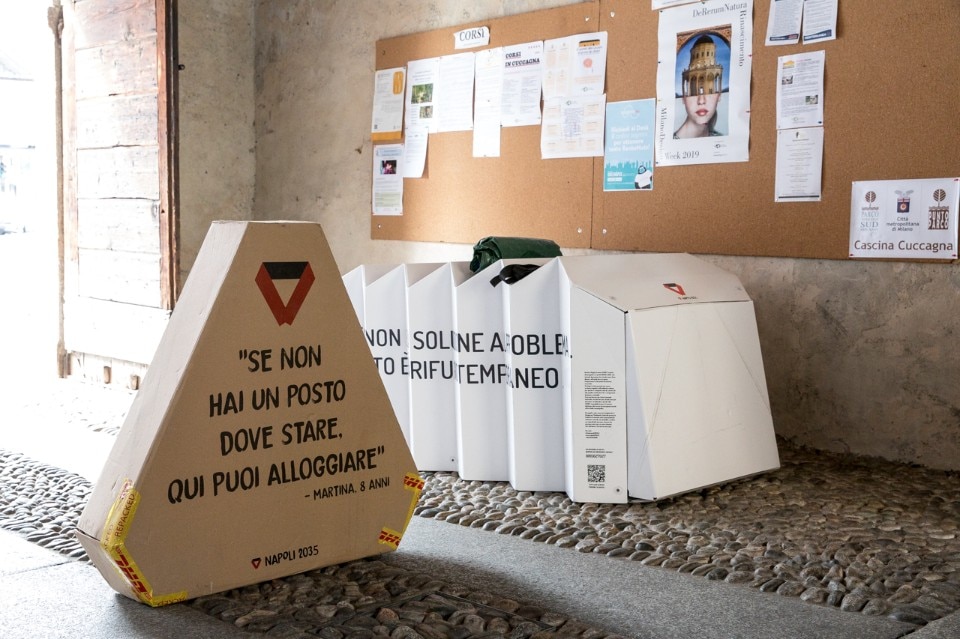Before visiting the exhibition, which Laura Traldi has curated in “De Rerum Natura - Rinascimento” at Cascina Cuccagna, visitors are kindly invited to take a bilingual sheet which contains a glossary. This provides the definitions of recurring terms used in “Design Collisions”, beginning with the two words making up the title of the exhibition. Resolving any linguistic misunderstandings and semantic imprecisions is the first step in properly understanding what is being shown in the six sections which make up a presentation which is decidedly less glamorous and easy to understand than the majority of those which form part of the the Fuorisalone, because the heart of the stories that it presents lies not in the final object (which often doesn’t even exist), but in collective intelligence. All fifteen stories - and their relative projects - were created within the community for the community, in order to collectively face up to the problems which we all face. Here, the Renaissance does not concern the individual, but more the group, and is a result of the “translation of ideas into feasible projects” (design) and the dynamic encounter between particles which determine an exchange of energy” (collisions). We spoke to the curator in detail about the project.
Define in more detail what you mean by design. From what one can see in the exhibition, there is no one designer that stands out.
In Italy, objects have always been used to present a social and anthropological world. But this is not the case everywhere, and above all not in the Netherlands, where I worked for many years for Philips Design, a wonderful organisation managed by Stefano Marzano, which brought together scientists, designers, psychologists and anthropologists to create visionary projects which present the future of technology. I grew up thinking that that blend of social, design, and technological approaches, that collective and multi-disciplinary project, was design. In the end, design is many things. It evolves extensively over time and is subject to misleading interpretations due to its essence as “pop”. Everyone sees and interprets it in a different way. What irritates me is when it is linked exclusively to form, to a rather empty aesthetic with no relation to culture, as is often the case with many examples of Italian design. A more international approach is design thinking, a dimension in which I am much more comfortable.
A dimension which, in the case of “Design Collisions”, involves a wide range of different figures, as well as entire communities, as expressed by the subtitle of the exhibition, the power of collective ideas.
The idea of the exhibition came to me while I was conducting an interview for the newspaper La Repubblica with Marinella Senatore, an activist who, since 2006, has involved over 5 million people worldwide to create, develop and produce works, performances, parades, shows, videos and installations. We met in Palermo for Manifesta 12, and she explained to me how “working together allows for the resolution of conflict” and, in fact, how “in the development of the act of creation, conflict is sought out, because its resolution allows progress and the creation of something new”. All I did was to ask myself what would happen if it were a design approach which moved people, and thus I began to seek out examples of excellence.
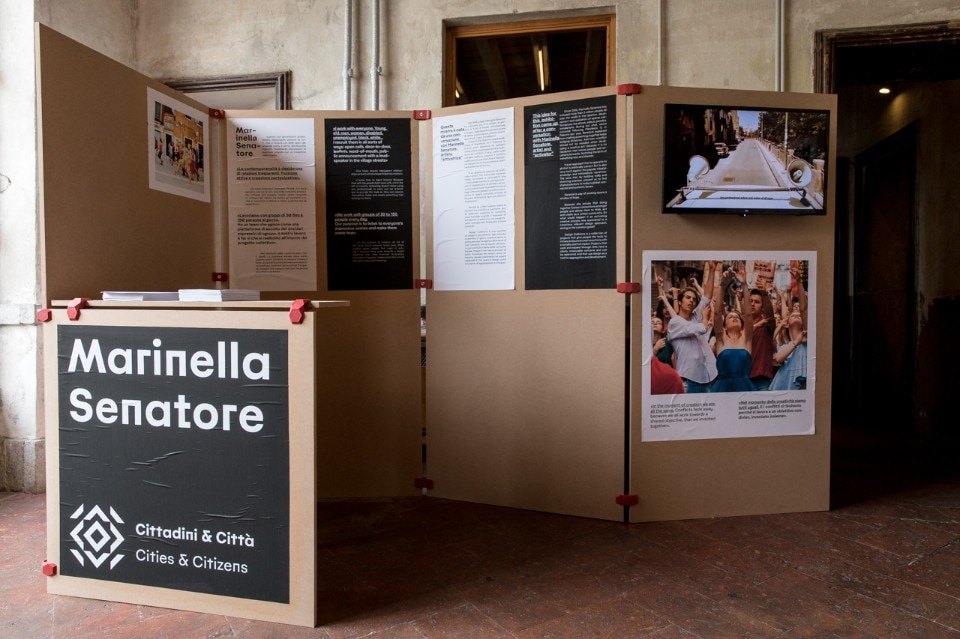
What was the criteria for selecting these projects?
To not be something new, and to have had proven impact on society. It may seem paradoxical to not choose new ideas, considering that I am a journalist by trade, but I did not want experimental initiatives. I wanted cases that had lasted over time and had had a quantifiable impact. In the case of the women’s rights project - Women’s Hands by Patrizia Scarzella - 500 women now have work, while thanks to the programme Days for Girls, there are a million girls who have received a kit for menstruation and can go to school (as explained in the information sheets on display). The starting point for identifying the projects was found in the “fractures” in society. The first was that between citizens and institutions. Francesca Bria explained to me how they had created the participatory democracy platform Decidim, developed by the city of Barcelona. It is open source and was designed in collaboration with the citizens. It does not belong to any political party, unlike the Five Star Movement’s Rousseau (the transparency and correctness of which was placed in serious doubt during the International Furniture Fair by the ruling of the Data Protection Authority, ed).
The themes chosen, a total of six, identify areas of fracture.
And they answer questions: how people can be involved in the development of cities, how they can develop shared solutions to global problems, create widespread innovation in healthcare, accompany women towards true independence and rediscover the value of human labour without denying technology, or construct sustainable relationships between differing cultures.
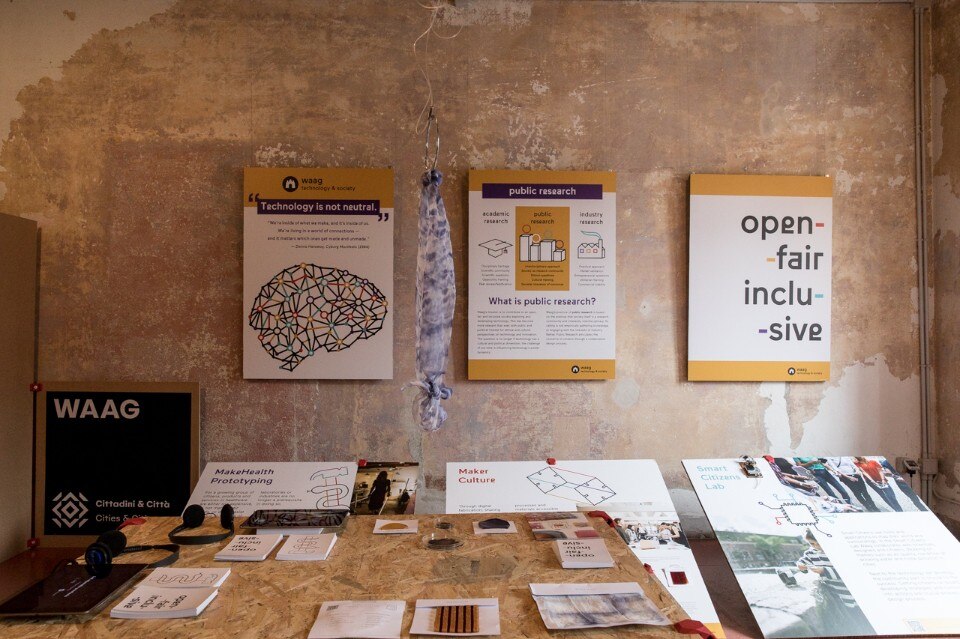
It was a precious opportunity for mapping through co-design. How did Italy fair?
In Italy there is a lack of collaboration on a general level, and there is no support for collective activities. This is perhaps because we are used to thinking alone, in contrast to the Netherlands, where there is a sense of a very strong country and an important sense of collaboration which is due, according to the Dutch themselves, to the fact that it is a nation underwater, in a continuous state of alert. Only by working together can they save themselves. In Amsterdam there is an organisation called Waag, a media lab which works in the intersection between art, design and technology to provide citizens with the instruments they need to act with conscience in the present, with the use of technology. It is a foundation where designers and engineers work with the support of sponsors. They have managed to create a business which serves the community. It is one of the examples presented in the section “citizens and cities”.
It is a model which is not easy to copy. How many situations did you find in Italy, and what are they?
There are some good practices here. One example is the FabLab of OpenDot, which together with the Tog foundation produces aids for disabled children which they contribute to designing. Another one is Funky Tomato, a socially-sustainable collective food supply chain - they pay the manual labourers with the money from those who have invested in the project - which reinvests, creating culture in the local area (Scambia, Basilicata and Foggia). There is also Talking Hands, the integration project for asylum seekers which works with crafts training and direct contact with businesses and the citizens of Treviso. The most interesting part of their project, in my opinion, is not so much the objects they produce, as the dynamics and relationships that are created when the participants take to the streets of the city by foot to deliver their produce, or when they go to the park to embroider, every Thursday, transforming the traditional habits of that area and transforming the general mood from discomfort to curiosity and interest. In the end, the human dimension is the most important thing to be preserved.
- Exhibition:
- Design Collisions. The power of collective ideas
- Curated by:
- Laura Traldi
- Venue:
- Cascina Cuccagna
- Address:
- Via Cuccagna 2 angolo via Muratori, Milan



